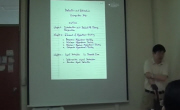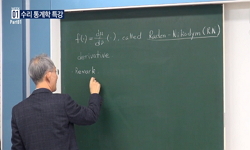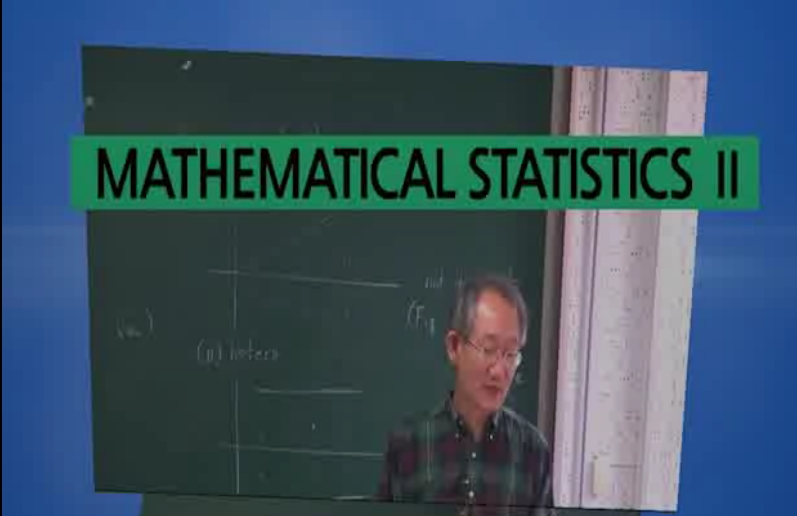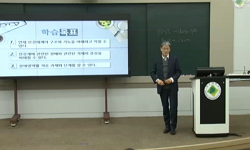A recently published nuclear forensics methodology for source discrimination of separated weaponsgradeplutonium utilizes intra-element isotope ratios and a maximum likelihood formulation to identifythe most likely source reactor-type, fuel burnup and ...
http://chineseinput.net/에서 pinyin(병음)방식으로 중국어를 변환할 수 있습니다.
변환된 중국어를 복사하여 사용하시면 됩니다.
- 中文 을 입력하시려면 zhongwen을 입력하시고 space를누르시면됩니다.
- 北京 을 입력하시려면 beijing을 입력하시고 space를 누르시면 됩니다.



Sensitivity Studies on a Novel Nuclear Forensics Methodology for Source Reactor-Type Discrimination of Separated Weapons Grade Plutonium
한글로보기https://www.riss.kr/link?id=A106280111
-
저자
Evans D. Kitcher (Center for Nuclear Security Science & Policy Initiatives) ; Jeremy M. Osborn (Center for Nuclear Security Science & Policy Initiatives) ; Sunil S. Chirayath (Center for Nuclear Security Science & Policy Initiatives)

- 발행기관
- 학술지명
- 권호사항
-
발행연도
2019
-
작성언어
English
- 주제어
-
등재정보
KCI등재,SCIE,SCOPUS
-
자료형태
학술저널
- 발행기관 URL
-
수록면
1355-1364(10쪽)
-
KCI 피인용횟수
0
- DOI식별코드
- 제공처
-
0
상세조회 -
0
다운로드
부가정보
다국어 초록 (Multilingual Abstract)
A recently published nuclear forensics methodology for source discrimination of separated weaponsgradeplutonium utilizes intra-element isotope ratios and a maximum likelihood formulation to identifythe most likely source reactor-type, fuel burnup and time since irradiation of unknown material.
Sensitivity studies performed here on the effects of random measurement error and the uncertainty inintra-element isotope ratio values show that different intra-element isotope ratios have disproportionatecontributions to the determination of the reactor parameters. The methodology is robust to individualerrors in measured intra-element isotope ratio values and even more so for uniform systematic errorsdue to competing effects on the predictions from the selected intra-element isotope ratios suite. For aunique sample-model pair, simulation uncertainties of up to 28% are acceptable without impedingsuccessful source-reactor discrimination. However, for a generic sample with multiple plausible sourceswithin the reactor library, uncertainties of 7% or less may be required. The results confirm the critical roleof accurate reactor core physics, fuel burnup simulations and experimental measurements in the proposedmethodology where increased simulation uncertainty is found to significantly affect the capabilityto discriminate between the reactors in the library.
참고문헌 (Reference)
1 A. Glaser, "Weapon-grade plutonium production potential in the Indian prototype fast breeder reactor" 15 : 85-105, 2007
2 S. S. Chirayath, "Trace fission product ratios for nuclear forensics attribution of weapons-grade plutonium from fast and thermal reactors" 23 : 48-67, 2015
3 S. C. Chetal, "The design of the prototype fast breeder reactor" 236 : 852-860, 2006
4 I.C. Gauld, "Origen-ARP, Automatic Rapid Processing for Spent Fuel Depletion, Decay, and Source Term Analysis"
5 W. S. Charlton, "Operator declaration verification technique for spent fuel at reprocessing facilities" 168 : 98-108, 2000
6 J. M. Osborn, "Nuclear forensics methodology for reactor-type Attribution of chemically separated plutonium" 201 (201): 1-10, 2018
7 K. Mayer, "Nuclear forensic science - from cradle to maturity" 444 : 50-56, 2007
8 M. Benedict, "Nuclear Chemical Engineering" Mcgraw-Hill Series In Nuclear Engineering 1981
9 S. S. Chirayath, "Neutronic and Nonproliferation characteristics of(PuO2-UO2)and(PuO2-ThO2)as fast reactor fuels" 239 : 1916-1924, 2009
10 D.B. Pelowitz, "MCNPX User’s Manual, Version 2.7.0" Los Alamos National Laboratory 2011
1 A. Glaser, "Weapon-grade plutonium production potential in the Indian prototype fast breeder reactor" 15 : 85-105, 2007
2 S. S. Chirayath, "Trace fission product ratios for nuclear forensics attribution of weapons-grade plutonium from fast and thermal reactors" 23 : 48-67, 2015
3 S. C. Chetal, "The design of the prototype fast breeder reactor" 236 : 852-860, 2006
4 I.C. Gauld, "Origen-ARP, Automatic Rapid Processing for Spent Fuel Depletion, Decay, and Source Term Analysis"
5 W. S. Charlton, "Operator declaration verification technique for spent fuel at reprocessing facilities" 168 : 98-108, 2000
6 J. M. Osborn, "Nuclear forensics methodology for reactor-type Attribution of chemically separated plutonium" 201 (201): 1-10, 2018
7 K. Mayer, "Nuclear forensic science - from cradle to maturity" 444 : 50-56, 2007
8 M. Benedict, "Nuclear Chemical Engineering" Mcgraw-Hill Series In Nuclear Engineering 1981
9 S. S. Chirayath, "Neutronic and Nonproliferation characteristics of(PuO2-UO2)and(PuO2-ThO2)as fast reactor fuels" 239 : 1916-1924, 2009
10 D.B. Pelowitz, "MCNPX User’s Manual, Version 2.7.0" Los Alamos National Laboratory 2011
11 J. Hendricks, "MCNPX 2.6.0 Extensions" Los Alamos National Laboratory 2008
12 J. Hendricks, "MCNPX 2.6.0 Extensions" Los Alamos National Laboratory 2008
13 D. B. Pelowitz, "MCNP6 User’s Manual, Version 1.0.0" Los Alamos National Laboratory 2013
14 P. M. Mendoza, "Fission product decontamination factors for plutonium separated by PUREX from low-burnup, fast-neutron irradiated depleted UO2" 118 : 38-42, 2016
15 M. W. Swinney, "Experimental and computational forensics characterization of weapons-grade plutonium produced in a fast reactor neutron environment" 197 (197): 1-11, 2017
16 Sunil S. Chirayath, "Experimental Validation of a Nuclear Forensics Methodology for Source Reactor-Type Discrimination of Chemically Separated Plutonium" 한국원자력학회 51 (51): 384-393, 2019
17 A. C. Hayes, "Determining reactor flux from xenon-136 and cesium-135 in spent fuel" 690 : 68-74, 2012
18 Jeremy M. Osborn, "Computational and experimental forensics characterization of weapons-grade plutonium produced in a thermal neutron environment" 한국원자력학회 50 (50): 820-828, 2018
19 Westinghouse Electric Company LLC, "AP1000 European design control document, Section 4 (3)"
20 S. S. Bajaj, "A. R. Gore The Indian PHWR" 236 : 701-722, 2006
21 SCALE, "A Comprehensive Modeling and Simulation Suite for Nuclear Safety Analysis and Design" ORNL 2011
동일학술지(권/호) 다른 논문
-
One-step Monte Carlo Global Homogenization Based on RMC code
- 한국원자력학회
- Qingquan Pan
- 2019
- KCI등재,SCIE,SCOPUS
-
- 한국원자력학회
- Guoxing Qiu
- 2019
- KCI등재,SCIE,SCOPUS
-
Development and Validation of a Fast Sub-channel Code for LWR Multi-physics Analyses
- 한국원자력학회
- Khurrum Saleem Chaudri
- 2019
- KCI등재,SCIE,SCOPUS
-
- 한국원자력학회
- Muhammad Siddique
- 2019
- KCI등재,SCIE,SCOPUS
분석정보
인용정보 인용지수 설명보기
학술지 이력
| 연월일 | 이력구분 | 이력상세 | 등재구분 |
|---|---|---|---|
| 2023 | 평가예정 | 해외DB학술지평가 신청대상 (해외등재 학술지 평가) | |
| 2020-01-01 | 평가 | 등재학술지 유지 (해외등재 학술지 평가) |  |
| 2014-01-01 | 평가 | SCIE 등재 (등재유지) |  |
| 2014-01-01 | 평가 | SCOPUS 등재 (등재유지) |  |
| 2011-01-01 | 평가 | 등재학술지 유지 (등재유지) |  |
| 2009-01-01 | 평가 | 등재학술지 유지 (등재유지) |  |
| 2007-01-01 | 평가 | 등재학술지 유지 (등재유지) |  |
| 2006-07-31 | 학술지명변경 | 한글명 : Jorunal of the Korean Nuclear Society -> Nuclear Engineering and Technology외국어명 : 미등록 -> Nuclear Engineering and Technology |  |
| 2004-01-01 | 평가 | 등재후보학술지 선정 (신규평가) |  |
| 2003-01-01 | 평가 | 등재후보 1차 PASS (등재후보1차) |  |
| 2002-01-01 | 평가 | 등재후보학술지 유지 (등재후보1차) |  |
| 1999-01-01 | 평가 | 등재후보학술지 선정 (신규평가) |  |
학술지 인용정보
| 기준연도 | WOS-KCI 통합IF(2년) | KCIF(2년) | KCIF(3년) |
|---|---|---|---|
| 2016 | 1.04 | 0.17 | 0.77 |
| KCIF(4년) | KCIF(5년) | 중심성지수(3년) | 즉시성지수 |
| 0.63 | 0.56 | 0.343 | 0.11 |




 ScienceON
ScienceON






